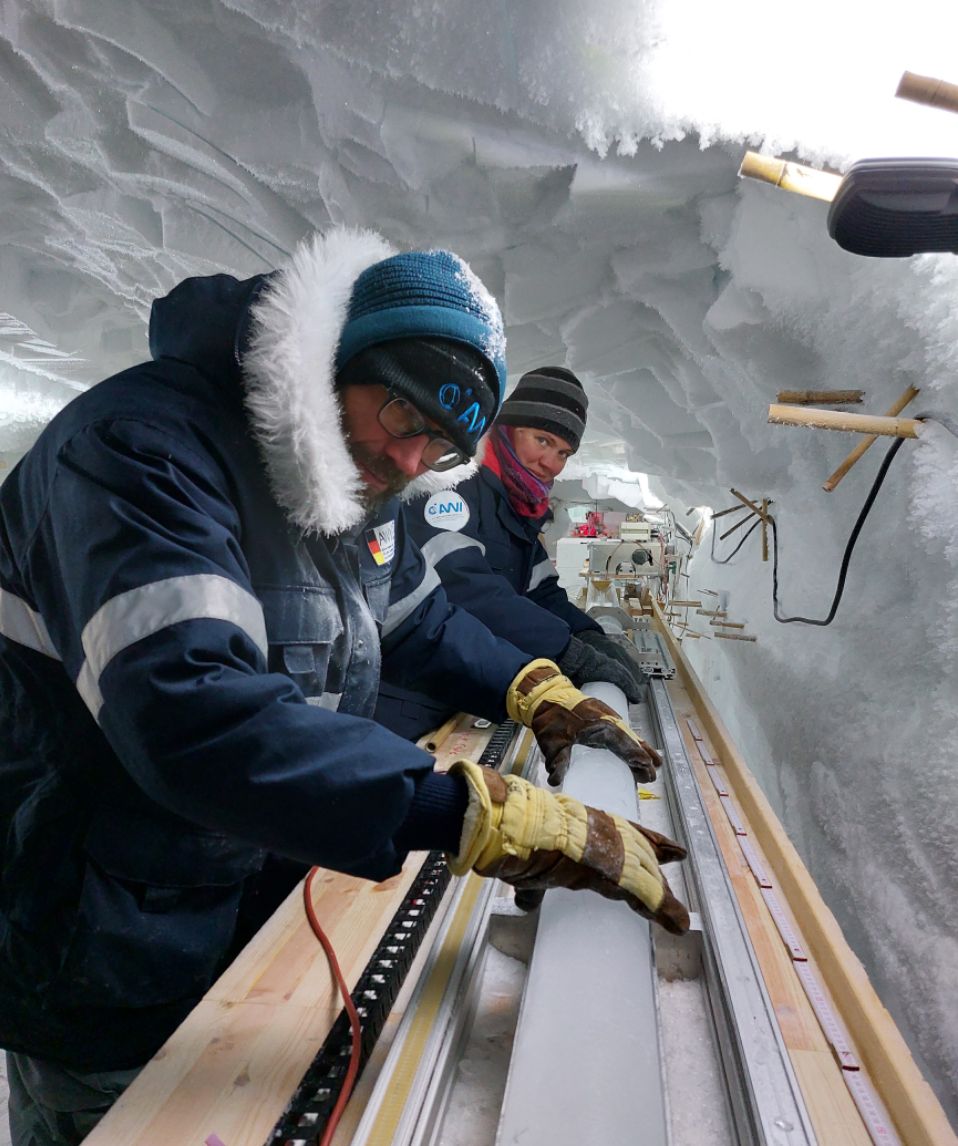
Johannes and Daniela are handling the shallow core in the DEP instrument in the science trench.
July 11, 2022

Johannes and Daniela are handling the shallow core in the DEP instrument in the science trench.
In the drill trench, the borehole was filtered and found to be clean all the way to the bottom. The main drill has now been assembled and it will be stress tested tomorrow. In the science trench, all instruments are now set up and are ready to measure ice cores. Today, one of the German shallow cores from the shear zone was measured on the non-destructive Dielectric Properties (DEP) instrument. The instrument detects among others acidity layers that are deposited from volcanic eruptions. By matching up the volcanoes with the corresponding events in the main core one quickly obtains a time scale for the shallow core. The only difference between the profiles is that the volcanoes are found about a meter deeper in the new core, because snow has been deposited on the surface and all of the annual layers have been shifted downwards in the ice sheet since the main core was drilled. The usual suspects were identified: Mount Katmai, Alaska, 1912 AD; Krakatoa, Indonesia, 1883 AD; Tambora, Indonesia, 1815 AD; and the largest spike is from the Lakagigar (alias Laki) eruption that was a disaster when it occurred in southern Iceland close to the village of Kirkjubæjarklaustur in 1783 AD.
What we did today:
Weather today: More snow today and white in all directions due to permanent overcast. Temp. -9.4°C to -7.0°C. Wind: 0-8 kt from NW - W - NW - SW.
FL, Anders Svensson